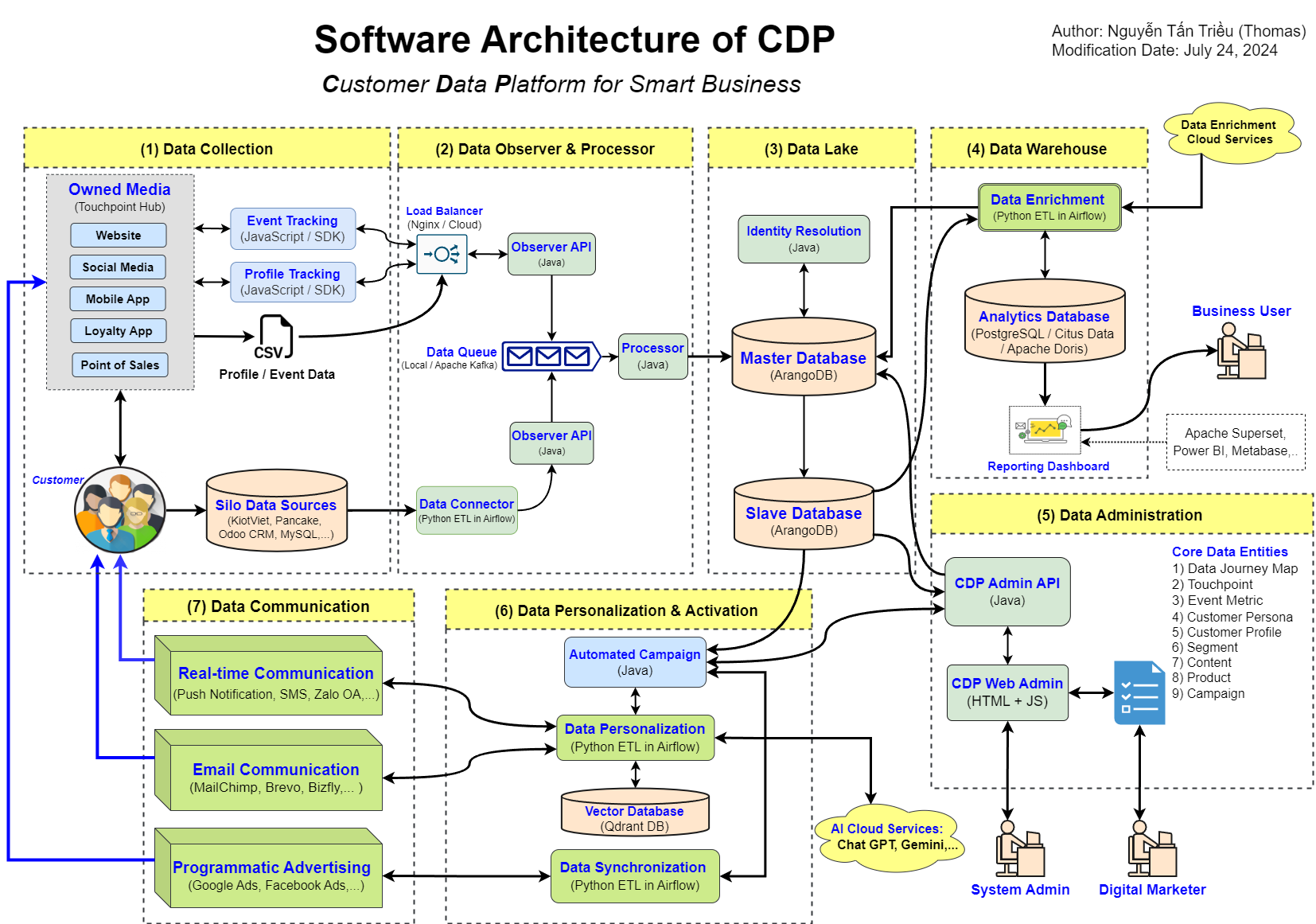Customer Data Platform Course Benefits
Clean, transform, and ingest data into LEO CDP
Create a unified customer profile
Work with Customer 360 Profile insights
Enrich data and predictions
Set up and manage external connections
Administer and monitor Customer Insights
Prerequisites:
Knowledge about Linux, Dev-Ops and Cloud Computing
Digital Business and Internet
Basic Knowledge about HTML, CSS and JavaScript
Core Digital Marketing Mindset
Knowledge about Data Analytics
Understanding how to create a comprehensive Customer Journey Map
Who should attend?
- Provide insight into customer profiles
- Track engagement activities to help improve customer experiences
- Increase customer retention
Module 1: Get started with LEO CDP
In this module, you will learn to:
Describe the value of a customer data platform
Describe the functionality of LEO CDP and system architecture
Administer environments and users in LEO CDP
Lab: Setup and verify environment
Module 2: Ingest data into LEO CDP
In this module, you will learn to:
Perform data transformation and import data using CSV Data File
Connect to LEO Profile API and Common Data Model sources
Set up scheduling job for data refreshes and data importing automation
Lab: Ingest data from CSV and LEO Profile API
Module 3: Create a unified customer profile in LEO CDP
In this module, you will learn to:
Map data, including using intelligent mapping, primary keys, and attribute types
Match data, including specifying order, rules, conditions, and de-duplication
Merge data using system recommendations or manually
Configure search and filter indexes
Search for customers
Lab: Unify the data
Module 4: Work with LEO CDP
In this module, you will learn to:
Explore Customer 360 Analytics
Define activities and event metrics
Define event scoring model
Manage segments and get suggested segments
Lab: Work with event activities
Lab: Define event metrics
Lab: Create segments
Module 5: Enrich data and predictions with LEO Machine Learning Templates
In this module, you will learn to:
Identify the different options for data enrichment
Enrich customer data with LEO machine learning templates
Predict what the customer will most likely buy using LEO Personalization Engine
Use machine learning models
Describe responsible AI principles
Lab: Create a Customer Personalization Model
Lab: Deploy Product Recommendation in website
Lab: Enrich data with natural language processing analytics and third-party data platforms
Module 6: Manage external connections with Customer Data Platform
In this module, you will learn to:
Explore LEO CDP API
Surface Customer Insights data in LEO CDP
Use Customer Insights and Visualization with Jupyter Notebook / Google Colab
Build your own customer dashboard using Apache Superset and CDP
Lab: Extend with the LEO Data Connector
Lab: Extend with the LEO CDP apps
